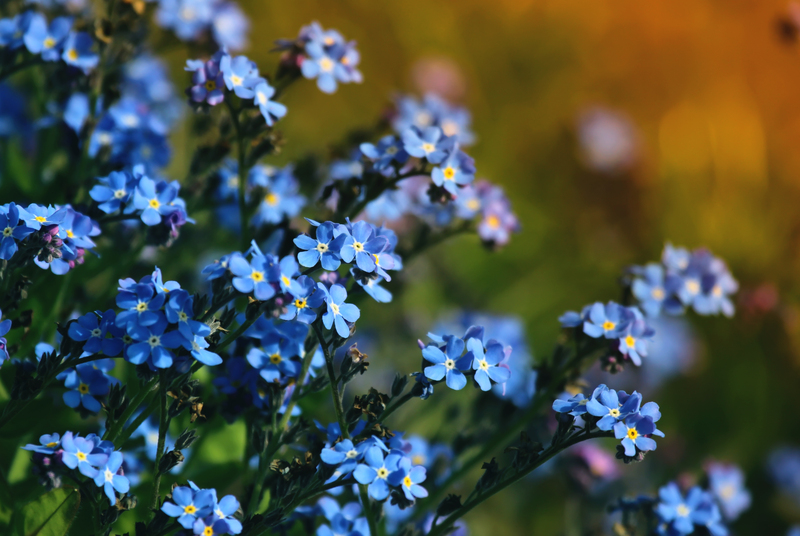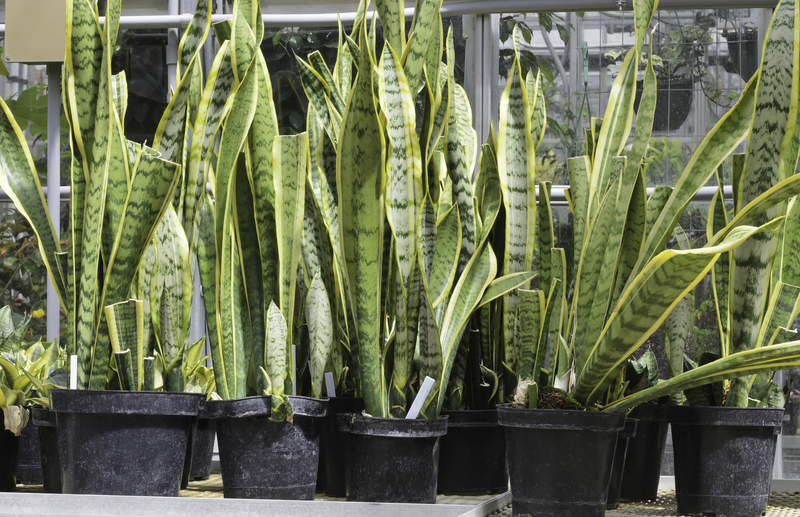Keep Your Garden Vibrant: Compact Evergreen Trees You'll Want to Plant
Every gardener dreams of a vibrant landscape that looks beautiful year-round. Compact evergreen trees are a versatile solution for adding color, privacy, and structure to any garden style--even the smallest urban yards. With the right selection, you can ensure your outdoor space remains lush and lively throughout all four seasons. In this comprehensive guide, we'll explore the best small evergreen trees, landscaping ideas, planting tips, and the unique benefits these evergreens bring to your home landscape.
Why Choose Compact Evergreen Trees for Your Garden?
Evergreen trees stand out for their ability to provide consistent greenery in every season. Their year-round foliage is not just visually appealing--it also serves functional benefits. But why specifically opt for compact varieties?
- Space-saving: Compact evergreens are ideal for smaller gardens, patios, and urban yards where space is a premium.
- Low maintenance: Many dwarf evergreens require less pruning and care than their larger counterparts.
- All-season color: Unlike deciduous plants, evergreens never lose their leaves, so your garden stays vibrant even in winter.
- Natural privacy and noise reduction: Small evergreen trees can create living screens that block eyesores or dampen noise.
- Wildlife-friendly: Evergreens provide year-round shelter for birds and beneficial insects.
- Versatility: Suitable for foundation plantings, hedges, borders, containers, and accent features.

Popular Types of Compact Evergreen Trees You'll Want to Plant
The world of compact, small evergreens is bursting with diversity. From classic pines and spruces to unique holly, here are some top picks for any landscape:
1. Dwarf Alberta Spruce (Picea glauca 'Conica')
This slow-growing conical tree is a classic choice for formality and neatness in gardens of any size. The Dwarf Alberta Spruce reaches up to 6-8 feet tall, but only 3-4 feet wide at maturity--even less in coastal climates. Its dense, bright-green needles look fresh and vibrant all year, making it excellent for accenting entryways or as a living Christmas tree in containers.
2. Hinoki Cypress (Chamaecyparis obtusa)
Hinoki cypress comes in several stunning dwarf varieties, such as 'Nana Gracilis,' famous for its sculpted, rich green foliage and graceful form. These compact evergreens grow slowly, reaching 3-6 feet tall and wide, making them a top pick for Japanese gardens, containers, or modern landscapes that value structure and subtle texture.
3. Dwarf Mugo Pine (Pinus mugo 'Mops')
If you're seeking an easy-care, rugged evergreen tree for small spaces, 'Mops' Mugo Pine is a winner. Compact and rounded, these pines reach about 3 feet tall and spread wider with age. Their tidy shape is ideal for rock gardens, mixed borders, or a drought-tolerant micro landscape.
4. Japanese Holly (Ilex crenata)
Want an evergreen shrub or tree to replace boxwoods or for topiary? Japanese holly is a strong candidate, with tidy, small, glossy leaves and a naturally compact habit. Varieties such as 'Sky Pencil' remain narrow and upright, perfect for patio pots or as a low-maintenance hedge.
5. Korean Fir (Abies koreana)
This exquisite, slow-growing evergreen delights gardeners with its purple upright cones and shiny dark green needles featuring silver undersides. Most Korean Fir cultivars do not exceed 8-10 feet at maturity, and dwarf versions may top out around 5 feet--making them superb focal points for small-space gardens.
6. Dwarf Eastern White Pine (Pinus strobus 'Nana')
Soft, blue-green needles add unique color and texture. This compact form of the eastern white pine grows slowly into a rounded mound, rarely exceeding 4 feet tall or wide, suiting both mixed borders and foundation plantings.
7. Little Gem Magnolia (Magnolia grandiflora 'Little Gem')
This is a rare compact evergreen magnolia, reaching just 15-20 feet at maturity, with a tidy pyramidal habit. The shiny, dark green leaves and brilliant white, fragrant summer flowers make it irresistible, especially in southern gardens.
8. Italian Cypress (Cupressus sempervirens)
If you want dramatic, upright structure, the Italian Cypress--especially in dwarf or 'Tiny Tower' cultivars--offers strong vertical lines without overwhelming tight spaces or paths. Their stately form is perfect for Mediterranean-inspired landscapes.
Best Landscaping Ideas with Compact Evergreen Trees
There are virtually endless ways to use small evergreen trees for landscaping. Here are some inspiring ideas to maximize vibrancy and structure in any garden:
- Living privacy screens: Plant compact evergreens in staggered rows to shield patios, disguise fence lines, or muffle traffic noise.
- Container gardening: Many dwarf evergreens grow happily in pots or planters, making them suitable for patios and balconies.
- Foundation accents: Use small evergreens to frame your home's entry, soften hard corners or anchor planting beds with year-round green.
- Mixed borders: Blend different textures (needles, leaves, cones) and green hues for four-season interest.
- Zen and rock gardens: Sculptural pines, junipers, and cypress are ideal for low-care modern or Asian-style gardens.
- Topiary and formal gardens: Clip hollies, boxwoods, or alberta spruce into spirals, globes, and cones for a whimsical touch.
How to Plant Compact Evergreen Trees for Best Results
Ensure your new compact evergreens thrive and keep your garden lush by following these important planting steps:
-
Choose the right location
Most small evergreen trees prefer full sun to part shade. Assess the soil drainage and space--ensure it can accommodate the tree's mature width and height. -
Prepare the soil
Evergreen trees love well-draining, slightly acidic to neutral soil. Amend heavy or clay soil with compost or pine bark fines to increase drainage. -
Correct planting depth
Dig a hole twice as wide as the root ball but only as deep. The root flare (where the trunk meets the roots) should sit just above ground level. -
Mulch generously
Apply a 2-3 inch layer of bark mulch around the base, but keep it a few inches away from the trunk to prevent rot. -
Water wisely
Water thoroughly after planting, then maintain consistent soil moisture for the first growing season--especially during dry spells. -
Fertilize sparingly
Most evergreens don't need frequent feeding. Use a slow-release balanced fertilizer in early spring if desired.
Year-Round Care Tips for Thriving Compact Evergreens
Evergreen trees are relatively low maintenance, but a little care goes a long way to keep them lush and healthy every season:
- Pruning: Lightly prune to maintain shape in late winter or spring. Remove dead or diseased branches as needed.
- Watering: Deeply water during extended droughts, especially for container-grown trees. Established evergreens are fairly drought-tolerant.
- Mulching: Refresh mulch layer each spring to suppress weeds and retain soil moisture.
- Pest management: Monitor for insects like scale or spider mites. Address infestations promptly with horticultural oil or insecticidal soap.
- Protection: Shield young or container evergreens from harsh winter winds and road salt with burlap screens or mechanical barriers.
Expert Tips for Selecting the Best Compact Evergreen Trees for Your Garden
With so many small evergreen trees to choose from, selection can be overwhelming! Here are a few pro tips to help you confidently choose beauties that will thrive in your landscape:
- Climate compatibility: Check your USDA hardiness zone and select varieties proven to thrive in your local weather conditions. Some evergreens prefer cool, moist climates, while others are heat and drought tolerant.
- Sunlight needs: Most compact conifers love full sun, though some holly and yew types accept partial shade.
- Growth rate: If you want instant impact, look for faster-growing dwarf varieties; if space is limited, embrace slow-growers for long-term structure.
- Foliage color and texture: Mix different shades of green, gold, or blue and pair needleleaf evergreens with broadleaf types for maximum contrast.
- Mature size: Always review the expected height and spread on the plant's tag--plan for the tree's ultimate proportions to avoid overcrowding.
Frequently Asked Questions about Compact Evergreen Trees
Are compact evergreen trees suitable for container gardening?
Absolutely! Many compact evergreen trees, such as dwarf pines, spruces, hollies, and cypress, thrive in pots or large planters. Be sure to choose a container with excellent drainage and provide regular watering, especially during hot weather. Refresh the potting mix every 2-3 years to ensure healthy root growth.
How often should I prune my compact conifers?
Minimal pruning is usually required, but shaping and removing dead branches can be done once a year, typically in late winter or early spring. Avoid heavy pruning during summer, as this can stress evergreen trees and hamper their growth.
Will compact evergreen trees grow in shade?
Some small evergreens--like yew (Taxus) and Japanese holly--do tolerate shade, but most prefer at least 4-6 hours of direct sunlight. Always check the plant label or consult your garden center for detailed light requirements.
Which compact evergreen tree has the most striking winter color?
For dramatic winter color, look to dwarf varieties of blue spruce, golden arborvitae, or variegated holly. Their unique foliage colors are especially eye-catching against a snowy landscape.
Inspiring Combinations: Pairing Compact Evergreens for Maximum Impact
For vibrant, layered garden design, blend compact evergreens with ornamental grasses, winter-flowering heather, or perennial shrubs such as hydrangea or azalea. Try ebb and flow plantings: cluster a few upright evergreens, intersperse rounded forms, and edge with spreading low juniper for dynamic texture. Don't be afraid to use containers or groupings for flexible design in small spaces.

Sustainable Benefits of Compact Evergreen Trees in Modern Gardens
The environmental perks of using compact evergreen trees extend far beyond beauty:
- Support pollinators and birds: Many evergreens provide essential habitat and nesting cover for wildlife, even in the middle of winter.
- Conserve water: Once established, many small pines, firs, and junipers are drought-tolerant and thrive with minimal irrigation.
- Reduce noise and pollution: Evergreen foliage helps block sound and filter dust and pollutants from the air.
- Lower energy costs: Strategically placed evergreens can shield your home from wind, helping retain heat in winter and coolness in summer.
Conclusion: Start Your Evergreen Journey Today!
Whether you want elegant privacy, striking color, or all-season vibrancy, compact evergreen trees are the ultimate garden investment. Their versatility, beauty, and easy-care nature make them ideal for both novice and expert gardeners. Add a few of these dependable evergreens to your landscape and watch as your garden stays fresh and lively, no matter the season. Start small, experiment with shapes, colors, and arrangements, and discover the transformative power of evergreens in your vibrant outdoor oasis!
Ready to transform your garden? Visit your local garden center, explore online nurseries, or consult a landscaping professional to select the perfect compact evergreen trees for your unique site. A lush, vibrant landscape awaits--year after year!